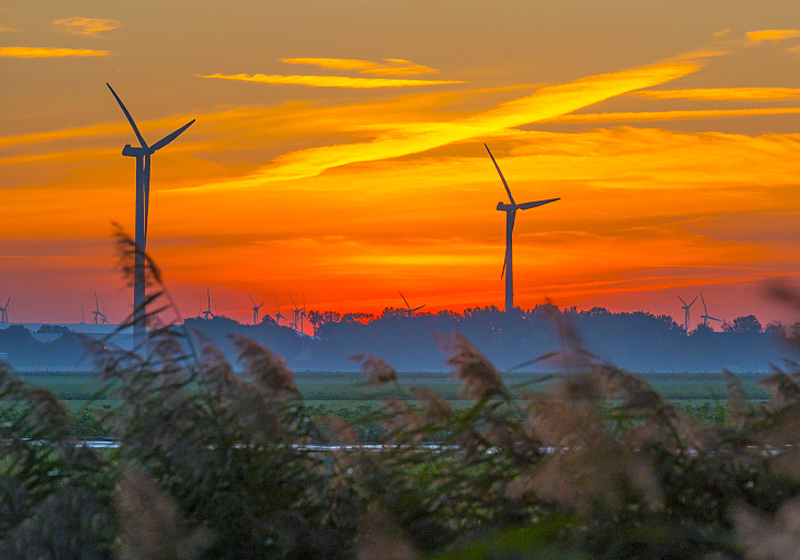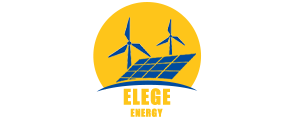Email format error
Email cannot be empty
Email already exists
6-20 characters(letters plus numbers only)
The password is inconsistent
Email format error
Email cannot be empty
Email does not exist
6-20 characters(letters plus numbers only)
The password is inconsistent


Is there a cap on the size of a wind turbine?
1 Overview
Wind turbine is mainly used to convert wind energy into electrical energy device, wind turbine models, according to the long-term practice and application of proof, the horizontal axis wind turbine because of its high efficiency of wind energy utilization, easy to control, and many other advantages, and gradually become the mainstream model of China's wind turbine.
2 wind turbine classification wind turbines are generally based on the form of installation of the wind turbine axle, the power control mode, the wind turbine speed adjustment, the main drive drive mode, etc. Classification.
2.1 The form of installation of the wind turbine axle can be divided into horizontal axis wind turbine and vertical axis wind turbine according to the form of installation.
2.1 Wind turbine shaft installation form according to the wind turbine shaft installation form can be divided into horizontal axis wind turbine and vertical axis wind turbine.
(1) Horizontal axis wind turbine wind wheel axis of rotation parallel to the wind direction. Horizontal axis wind turbine must have a wind device, follow the wind direction changes and rotation, in order to absorb wind energy from all directions. For small wind turbines, this wind device is often used rudder, while for large wind turbines, the use of wind sensors to measure the wind direction, adjusted by the microprocessor to control the yaw system for wind. Horizontal axis wind turbine according to the position of the wind wheel relative to the tower can be divided into upwind wind turbine and downwind wind turbine. The wind wheel is located in front of the tower for the upwind wind turbine, the wind wheel is located behind the tower for the downwind wind turbine. Currently wind farms use grid-connected wind turbines are mostly upwind horizontal axis wind turbines.
(2) Vertical axis wind turbine wind wheel axis of rotation perpendicular to the ground or the direction of the airflow. Vertical axis wind turbine can absorb wind energy from all directions, without wind device, which is a major advantage compared to the horizontal axis wind turbine, and transmission and power generation equipment are installed on the ground, easy to maintain; however, by the blade manufacturing process limitations and tie-line tower occupies a large amount of land area and other factors, the vertical axis wind turbine has not been developed.
2.2 Power control mode in accordance with the power control mode can be divided into Fixed pitch wind turbine, variable pitch wind turbine and active stall wind turbine.
(1) Fixed pitch wind turbine blades are fixedly connected to the hub. Under the condition of constant rotational speed of the wind turbine, when the wind speed increases more than the rated wind speed, with the increase of the angle of attack of the blades, the airflow separates from the surface of the blades and the blades will be in a stalled state, and the wind energy absorbed by the blades not only won't increase but also decreases, so as to make sure that the output power of the wind turbine is within the rated range. Features of fixed pitch wind turbine: simple structure without pitch mechanism, and the control system is also relatively simple. However, the efficiency of the wind turbine to absorb wind energy is low, especially after the wind speed exceeds the rated wind speed, due to the stalling effect of the blades, the output power will also be reduced; the unit is subjected to a large load; the weight of the unit is heavier than that of the same type of variable pitch wind turbine.
(2) Pitch pitch wind turbine blades are connected with the hub through pitch bearings, and the installation angle of the blades can be controlled by the pitch system. When the wind speed is lower than the rated wind speed, the blades are guaranteed to be in the best angle of attack state to obtain the maximum wind energy; when the wind speed exceeds the rated wind speed, the pitch system reduces the angle of attack of the blades to ensure that the output power is within the rated range. The characteristics of pitch wind turbine: complex structure, need to increase the pitch bearing and a set of pitch drive device, at the same time, the control system also becomes very complicated. However, the pitch wind turbine can obtain better performance, the unit output is higher than the same capacity of the same wind turbine; the wind speed exceeds the rated wind speed after the blade to withstand the load is smaller, the weight of the unit is lighter than the same type of fixed pitch wind turbine.
(3) The mechanical mechanism of active stall wind turbine is similar to that of pitch wind turbine, the blades and hub are connected by pitch bearings, and the mounting angle of the blades can be controlled by the pitch system. But there are differences in control, when the wind speed is lower than the rated wind speed, the control system according to the wind speed in several steps to control the installation angle of the blades, the control accuracy is lower than the pitch control, and no complex servo or proportional control system; when the wind speed exceeds the rated wind speed, the pitch system to increase the angle of attack of the blades, so that the blades produce a stall, to limit the increase in the power absorbed by the wind turbine, which is similar to the pitch wind turbine stall regulation, therefore, it is called the active stall. This is similar to the stall regulation of fixed pitch wind turbines, so it is called active stall. The active stall wind turbine has the advantages of both fixed pitch wind turbine and pitch wind turbine, the pitch mechanism, maintains the power curve after the wind speed exceeds the rated wind speed, the control system is simpler than the pitch wind turbine, it is a kind of wind turbine between the fixed pitch wind turbine and pitch wind turbine.
2.3 Wind turbine rotational speed adjustment mode according to the wind turbine rotational speed adjustment mode can be divided into the constant-speed wind turbine and the variable-speed wind turbine.
(1) Constant-speed wind turbines use synchronous generators or asynchronous generators directly connected to the power grid, the generator speed is basically synchronized with the frequency of the power grid, and the rotational speed of the wind turbine remains constant, including the use of two-speed generator wind turbines are also classified as constant-speed wind turbines.
(2) Variable-speed wind turbine generator is connected to the power grid through a frequency converter, the generator speed does not need to be synchronized with the grid frequency, and the power generated by the generator is delivered to the power grid through the frequency converter. The wind turbine speed of the variable speed wind turbine can be adjusted within a certain range. Through the variable speed adjustment, it can make the blade tip speed ratio closer to the optimal blade tip speed ratio and obtain more wind energy. Through variable speed control, the flexible connection between the wind turbine and the power grid can be realized, which can reduce the impact of gusts on the wind turbine, store the wind energy captured by the wind turbine in gusts as the kinetic energy of the transmission system, reduce the alternating shock load of the transmission system, and improve the stability of the output power. At the same time, it can reduce the adjustment of the pitch mechanism and increase the stability of the system. Through variable speed control, the wind turbine can be made to work in a constant torque state, reducing the load on the main drive system.
2.4 Main power transmission drive mode according to the main drive system drive mode can be divided into gear box drive and direct drive.
(1) Gearbox-driven wind turbine uses a high-speed generator, and through the transmission of the gearbox, the low rotational speed of the impeller is increased to the rotational speed that matches the generator, and the generator is driven to generate electricity.
(2) Direct-driven wind turbines use multi-stage generators, the wind turbine shaft is directly connected to the generator, without the need for a gear box to increase transmission. The use of multi-stage generator, the generator has a large number of stages, the diameter is also larger. Due to the low rotational speed of the wind wheel of large wind turbines, even with multi-stage generators, the output frequency is far below the grid frequency, so it is necessary to use a high-power frequency converter connected to the grid.

